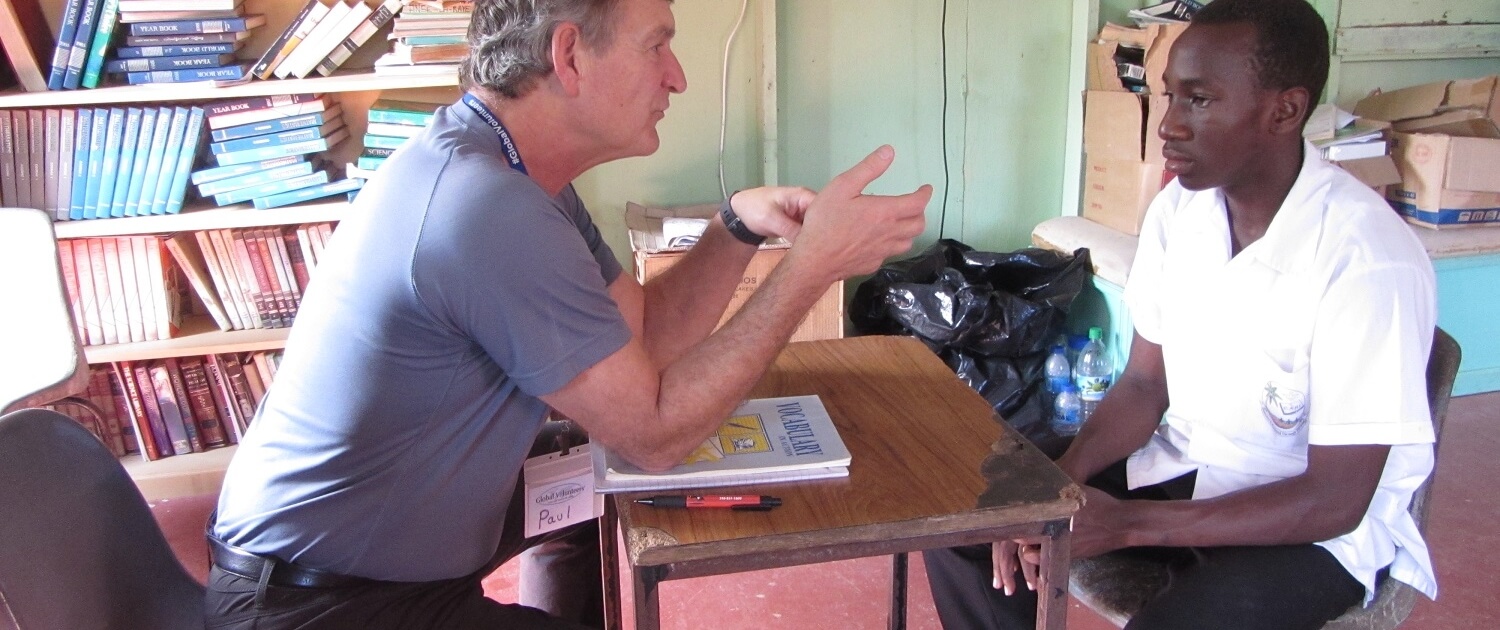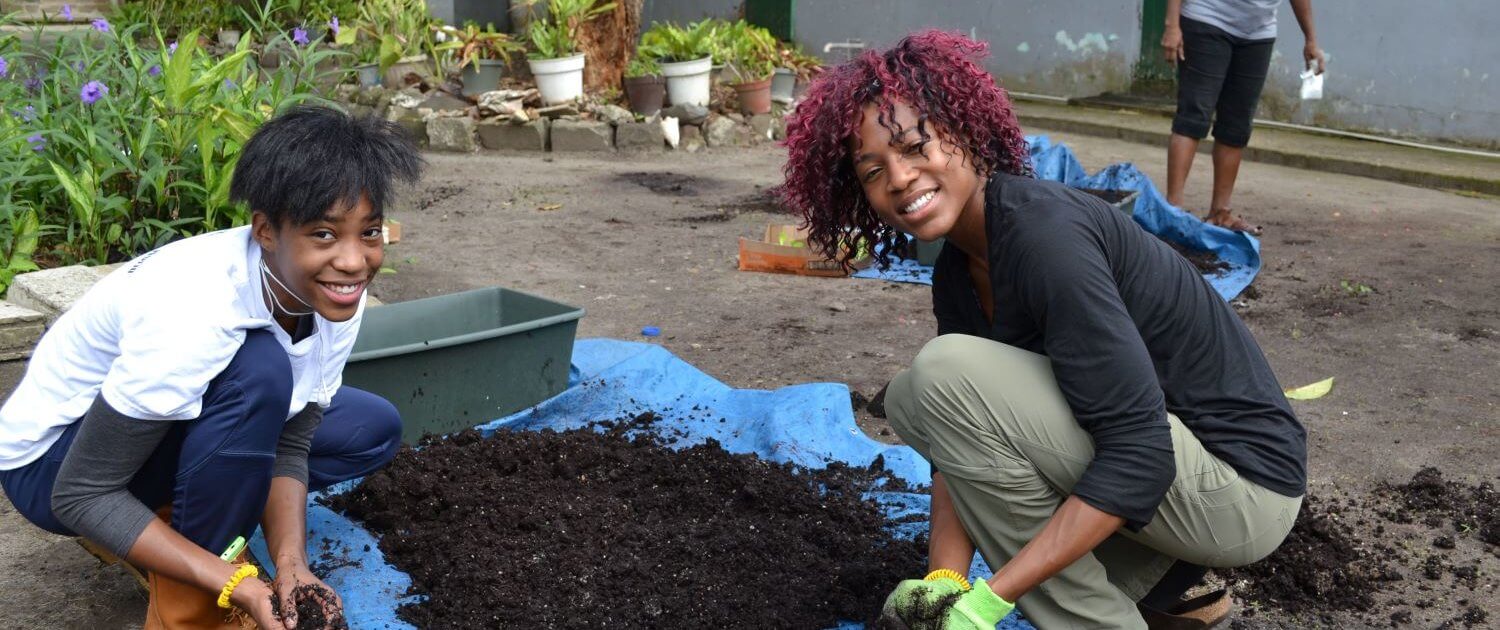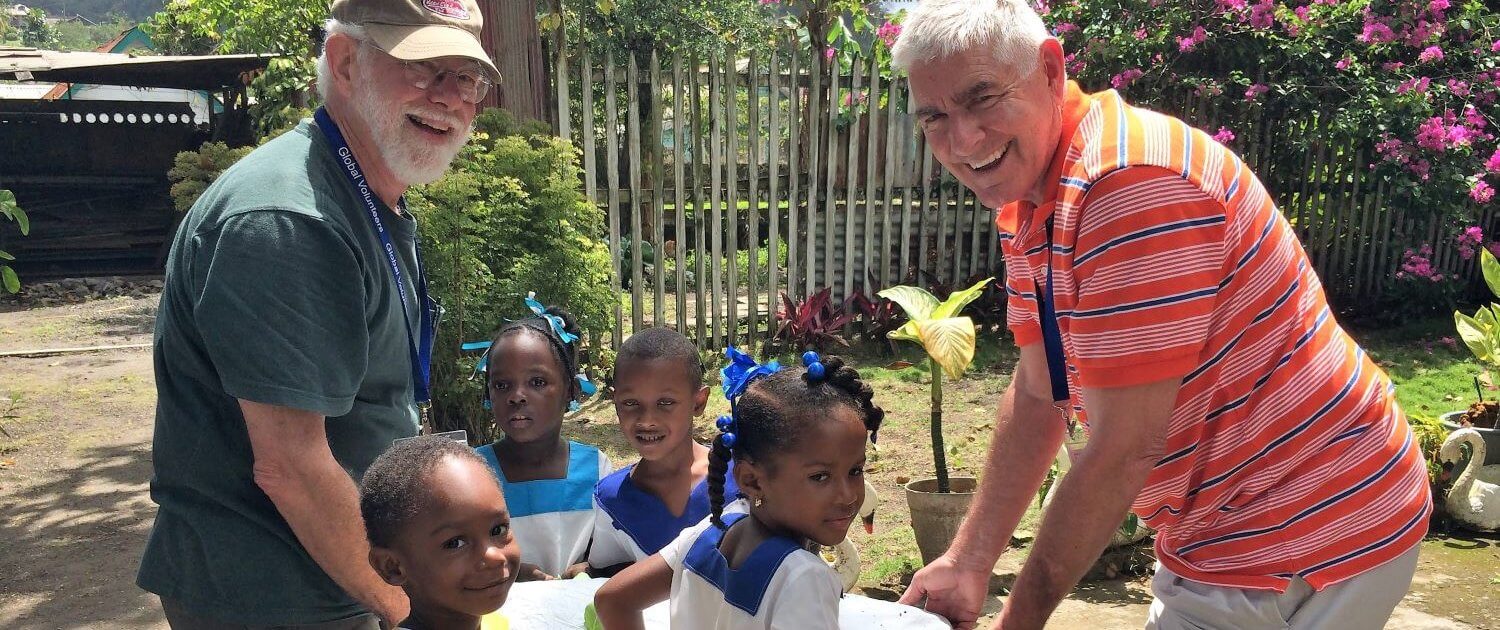Building Local Capacity in St. Lucia
Global Volunteers’ goal is to support and fortify community leaders’ vision for self-sufficiency – ultimately to enable children and families to reach their full potential. Our role in helping build local capacity is explained through interviews with our community partners, below:
How do Global Volunteers’ community partners work toward the well-being and self-sufficiency of the wider community?
Our long-standing community partner in St. Lucia, the Nativity of the Blessed Virgin Mary Catholic Church, leads several community-based programs, including the Anse la Raye Infant and Primary School. The Infant School covers grades K-2 (ages five through seven) while the Primary school covers grades three through six (ages eight through twelve). Together, these schools provide education to approximately 300 students. Our ability to work with teachers to improve educational resources multiplies impacts across the community.
Global Volunteers also partners with C.A.R.E. (Centre for Adolescent Renewal and Education), an alternative and technical school extending an educational “second chance” to students. Together, we help high-school-aged students learn skills in electricity, joinery, computer skills, and catering to improve their futures.
Finally, Global Volunteers directly supports local families by supplying fruit/vegetable gardens to improve nutrition and providing resources and instruction to local women’s sewing groups targeting self-reliance and income-generation.

How do these projects elevate local participants’ potential, and ripple across Anse La Raye?
All Global Volunteers’ work projects are designed with an eye to long-term sustainability and integration. For instance, higher literacy rates provide a basis for lifelong learning. But children will not be able take advantage of learning opportunities if they lack adequate nutrition. Similarly, teenagers may have difficulties taking advantage of educational opportunities without mentoring and encouragement. Support to teenagers also increases their confidence as well as communication and interpersonal skills, all of which leads to positive behavior changes and better life decisions. Children who eat healthy and receive both education and support can become healthy, confident, and productive adults. Finally, women who can provide fruits and vegetables for their families and make some income through sewing are empowered and more independent, all of which helps gender equality. That’s why we seek ground-level projects that secure the long-term health and capacity of the entire community and support local leaders’ overall development goals.
From your experience, how do volunteers support and help sustain these projects?
Specifically, volunteers work hand-in-hand with us in various capacities in all these projects to help elevate our community. They teach, plant and shovel alongside us to motivate and help us achieve our overall goals. The focus is on children, and the mothers and grandmothers who support them physically, emotionally and materially. For instance, young women who learn sewing skills can better provide for themselves and their children.
Additionally, volunteers care for and instruct children at the infant and primary schools through arts and crafts, storybooks, music and games, and assist with hand washing with soap and water, brushing teeth, and other life skills. Their unique skills complement existing curricula and always bring something new to the classrooms. They also tutor one-on-one and in small groups to help primary school students with numeracy and math comprehension – a resource we couldn’t afford any other way.

In the same way, the volunteers who work with teens at CARE on classroom subjects, physical fitness, disease prevention, and trades skills enhance students’ grasp of these topics by bringing new perspectives and lived experience. Most importantly, they provide psycho-social support, encouragement, and inspiration for kids who may have lacked at-home reassurance and direction.
By supplying EarthBox container gardens, Global Volunteers helps Saint Lucian families introduce vegetables into their children’s diets at an early age, and with them, the vitamins and nutrients essential for steady growth and development. What’s more important than investing in children’s health? As their brains and bodies grown, their potential advances. Across the village, these container gardens can be seen on patios, porches, and even roofs with different varieties of plants as families try new combinations of vegetables each year. We work with families to ensure the gardens are replanted each growing season. On nearly every program, volunteers help with garden maintenance and distribution. It’s an optimistic investment in the ultimate health of the community.
In what ways do you consider these contributions uniquely beneficial ?
Human connections, the face-to-face interaction between volunteers and villagers as they work alongside each other on projects is particularly beneficial because it allows for the exchange of best practices, cultures and perspectives which fosters personal growth and improvement in the way we do things. Also, because we, the local people, are heading the work, there is no room for volunteers to redirect efforts, because they are just there to support. They are the added force that help us turn the wheel faster. This is a win-win situation because volunteers and local people are happier and the community better at the end of each volunteer service program.

Where is the line between sustainability/self-sufficiency and dependency? How have you helped ensure appropriate levels of volunteer assistance?
Because Global Volunteers only responds to the needs that we, the local people, have identified, we’ve formed a strong basis for our community to be self-sufficient and sustainable. Since our projects respond to pressing needs in the community, we are enthusiastic and will do all we can to make it successful and meet our needs as a community. As we gain knowledge, skills and a sense of ownership from being directly engaged in the work with volunteers, this allows for continuity and independence because we have become capable to do so.
For example, a group of women asked Global Volunteers to teach them how to make dresses. Global Volunteers responded by sending skilled volunteers to do so. Attendance to those classes was excellent. However, classes were stopped because of the pandemic. Many of the women now hope to make dresses for themselves and their families while others want to turn this skill into a business. In other words, volunteers are helping local women become independent and self-sufficient.
We strive to always work in this way – with local people leading the projects, and volunteers acting as catalysts. It’s really the only way to ensure long-term development.




Leave a Reply
Want to join the discussion?Feel free to contribute!